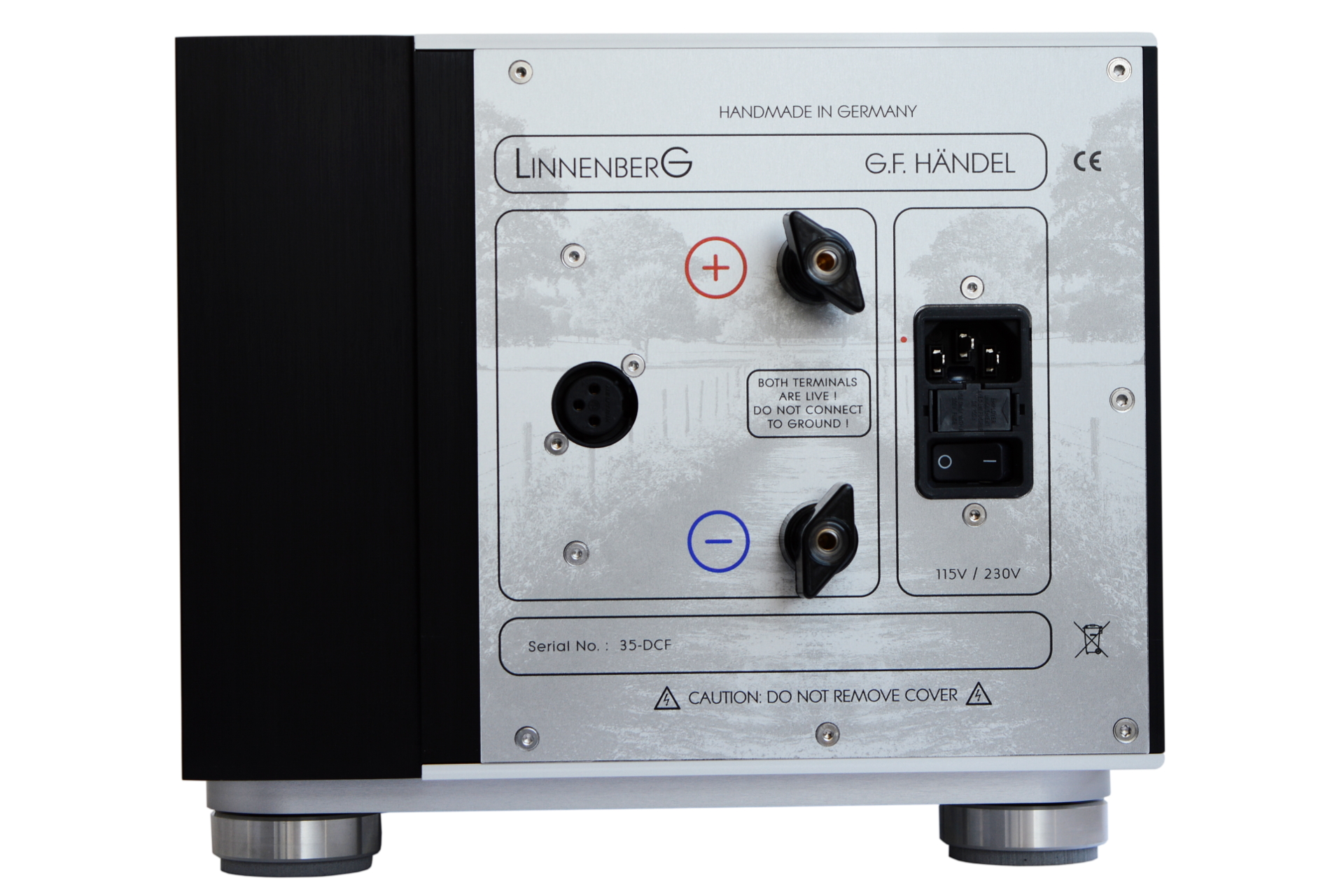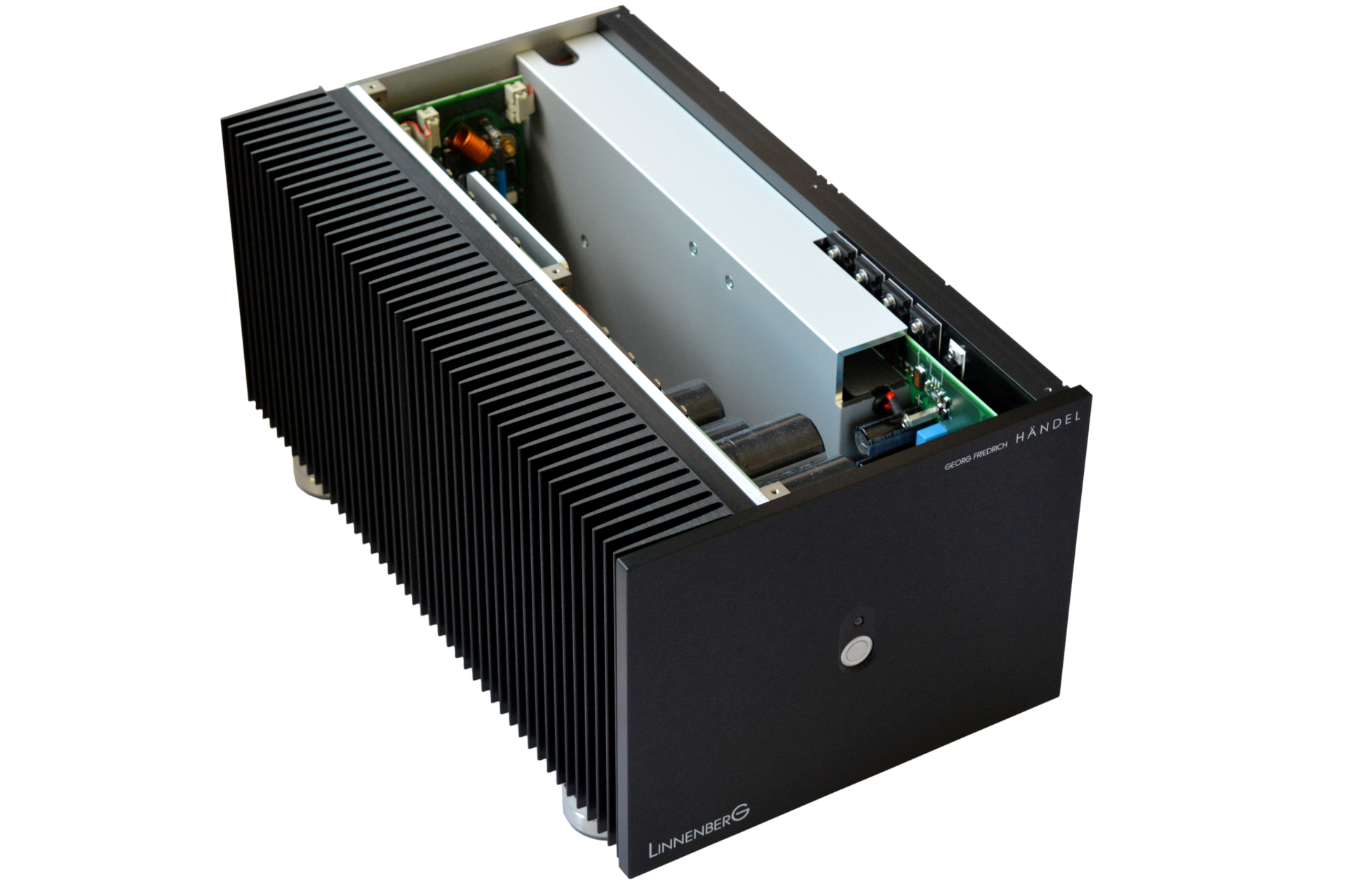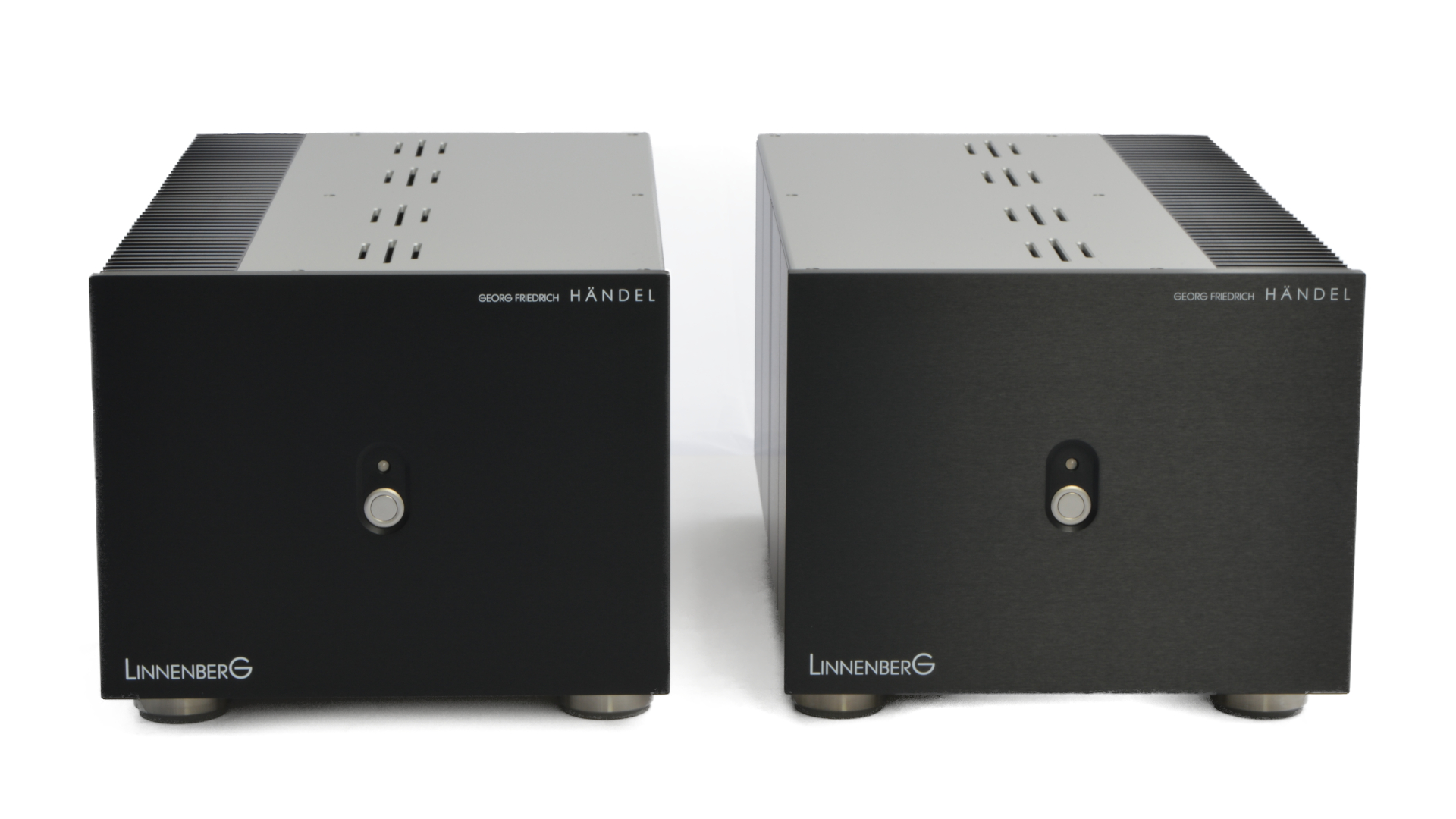LINNENBERG
G.P. TELEMANN (GPT) is a crème de la crème analogue preamplifier for all common signal sources, be it digital (due to the inbuild D-A-converter), analogue, symmetrical (balanced) or single-ended. Signal processing inside the GPT is strictly balanced, making it the ideal control centre for a fully balanced audio system. The high and stable output drive enables long cable runs to the power amplifier with zero phase-shift across the entire frequency spectrum.
Controlling the volume is one of the most trivial and at the same time most demanding tasks in audio engineering. The circuit is fully symmetrical and high frequency capable at the same time. For this reason the characteristic impedance of the attenuating ladder arrangement matches the impedance Z of the microstrip differential signal pair used throughout the GPT.
The rise time for a 2 V step is only 35 ns. It's incredibly fast. 2V is almost all it takes to get full output from a downstream power amplifier. Bandwidth corresponds to speed and vice versa. In this case it is a whopping 3.5 MHz. So GPT is really ultra-broadband, 175 times more than the audio bandwidth. Some may view this as technical overkill, but it is not ! The result is increased transparency, less grain and more music.
By keeping the recipe and refining the ingredients, digital to analogue conversion is carried out by the ES9038 PRO, incorporating innovative circuits delivering spectacular music free from annoying artefacts. 4x balanced 32-bit D/A converter per channel pass over audio to our proprietary discrete analogue circuits. A novelty at LINNENBERG AUDIO: the DAC board is upgradeable at any time should this be necessary or making sense.


The Georg Friedrich Händel features a completely balanced architecture, with no back and forth conversion. In consequence, two tightly coupled amplifiers are employed, one driving the speaker+ and one driving the speaker- terminal. While this doubles costs, it relieves the circuit ground from carrying the speaker return currents, resulting in a clean and unspoilt ground potential.
The high quiescent current Class A design of the preamp and driver stages enables a core speed close to 1.5MHz, slowed down only by input and output filtering to match real word requirements. With filters in place, the small signal as well as full power bandwidth (!) measures an impressive 400 kHz. The lower frequency limit is around 0.3 Hz. No coupling capacitors are used throughout.
The Händel monoblocks use an efficient Class A design that offers all the properties of pure Class A while reducing power consumption and thermal stress on the electronic parts. This is done with a combined switch-mode pre-regulator and an analog tracking post-regulator. The output voltage of this arrangement is the basis of all other supply voltages used in the amplifier. Because of its stability, the amplifier doubles the power when the load impedance is halved (perfect voltage source behavior).
High resolution audio is intrinsically tied to low noise and low distortion. System noise is the lower resolution limit of an analog system, because it determines the smallest signal not masked by a noise floor. Hence, low noise levels and thus a wide dynamic range are desirable. The A-weighted output noise measures less than 20µV; this is the blackest of all black backgrounds. Period.



扫描二维码分享到微信